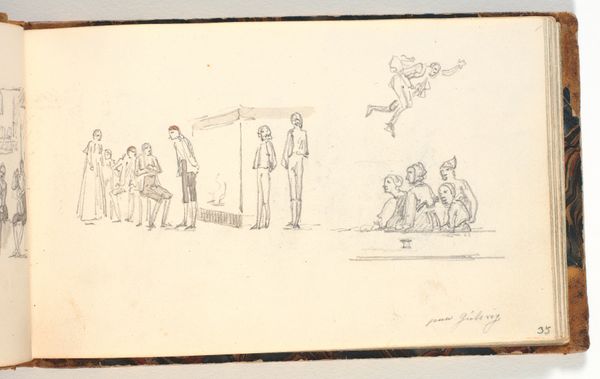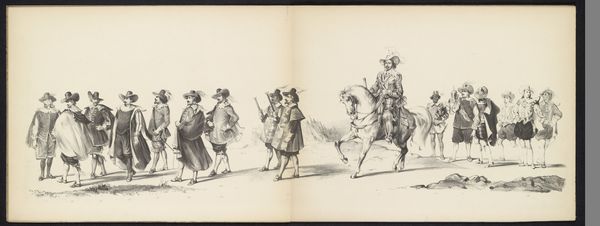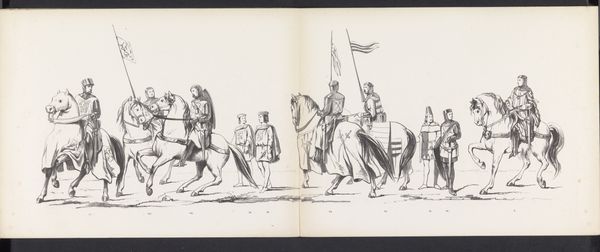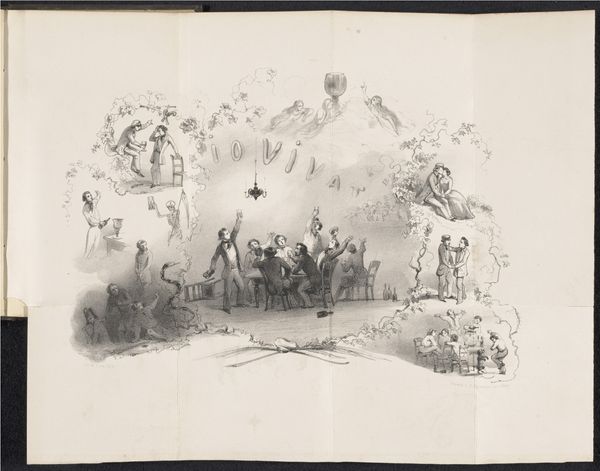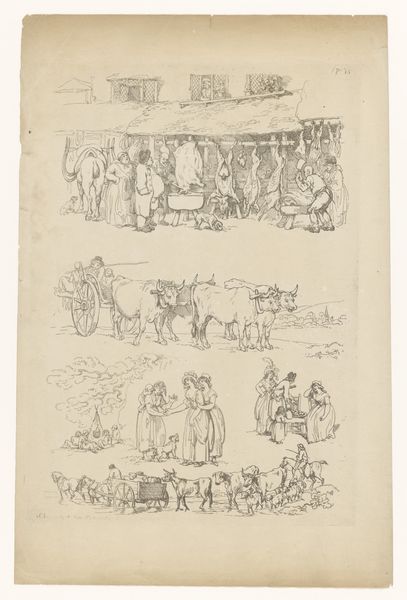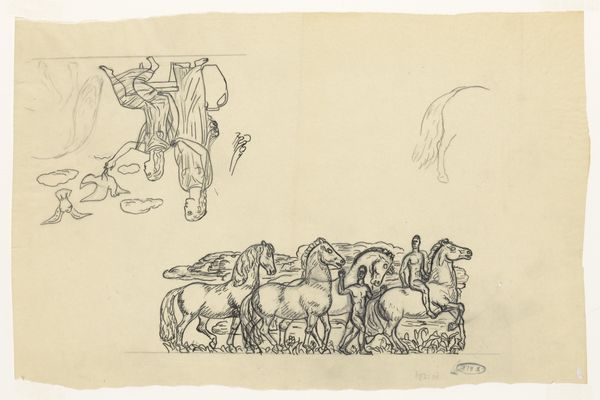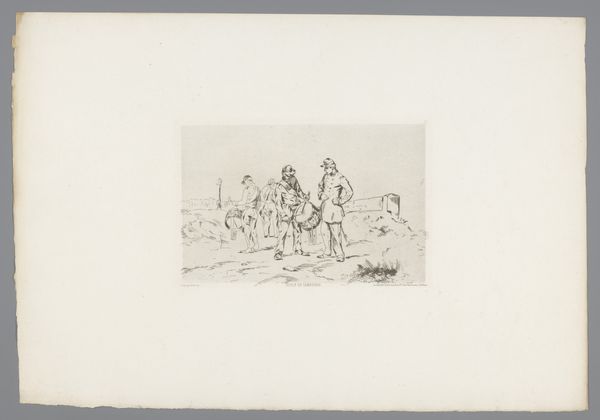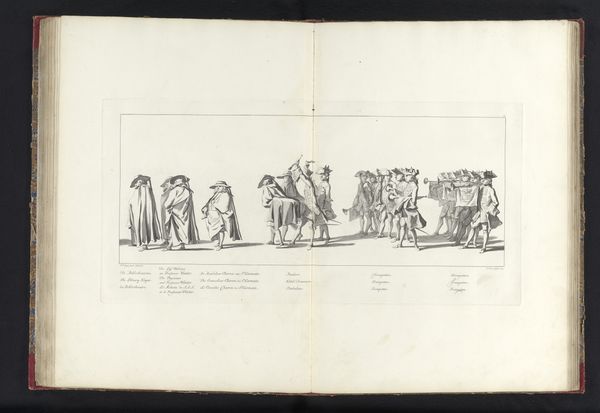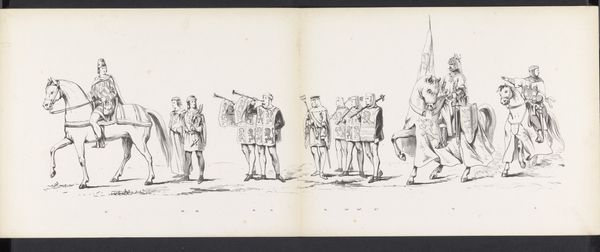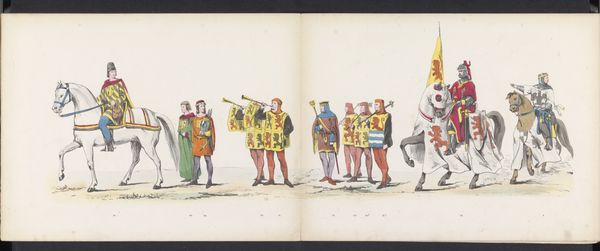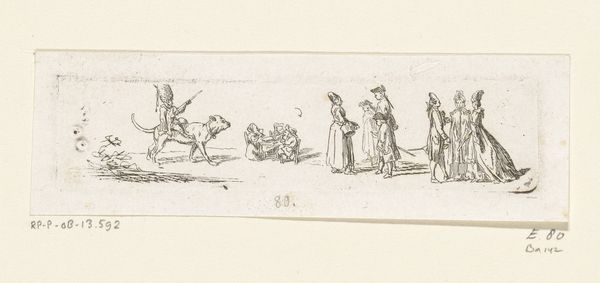
Maskerade van de Leidse studenten, 1865 (plaat 10) 1865
0:00
0:00
drawing, paper, ink, pencil
#
portrait
#
drawing
#
narrative-art
#
paper
#
ink
#
group-portraits
#
pencil
#
genre-painting
#
history-painting
#
academic-art
Dimensions: height 275 mm, width 720 mm
Copyright: Rijks Museum: Open Domain
Curator: Today we are looking at a drawing by Jan Daniël Cornelis Carel Willem baron de Constant Rebecque titled, Maskerade van de Leidse studenten, 1865 (plaat 10). This work in ink and pencil on paper, showcases a historical parade, rich with narrative and perhaps civic pride. Editor: My first impression is one of austere elegance. The monochromatic palette and delicate linework lend it a distinctly classical air. There’s a clarity of form and a focus on the shapes that really pulls you in. Curator: Yes, the visual clarity is striking. It is interesting how the artwork's narrative is closely related to student culture and academic societies in Leiden at that time, offering insight into the socio-political environment and values of Dutch society in the mid-19th century. We could see it as an illustration of a specific social ritual and commentary on identity performance through elaborate masquerade. Editor: I'm particularly drawn to the way the artist renders movement and weight in the horses, just through the articulation of the limbs and careful use of negative space. It conveys a palpable sense of dynamic energy, despite the stillness of the drawing. Curator: Absolutely. Further considerations should be given to what these masquerades communicated about Dutch history, and what elements of it were either promoted, re-imagined, or omitted. Details in the figures costumes give a glimpse into period interests in recreating history, possibly romanticizing particular events, individuals, and legacies. Editor: Agreed, although without necessarily needing to connect the drawing to student life, one can still appreciate how the strategic placements of light and shadow create a rhythm that directs the eye. It's the interplay of these purely formal elements that provide the work its aesthetic potency. Curator: Well, the convergence of your analysis with mine truly shows how a work of art can serve as both a portal into our cultural past and as a canvas onto which viewers imprint their own perspectives, revealing new depths and layers with each passing gaze. Editor: Precisely. There are no ultimately "correct" readings, but engaging in critical reflection helps expand one's awareness of the myriad ways visual form has meaning.
Comments
No comments
Be the first to comment and join the conversation on the ultimate creative platform.

